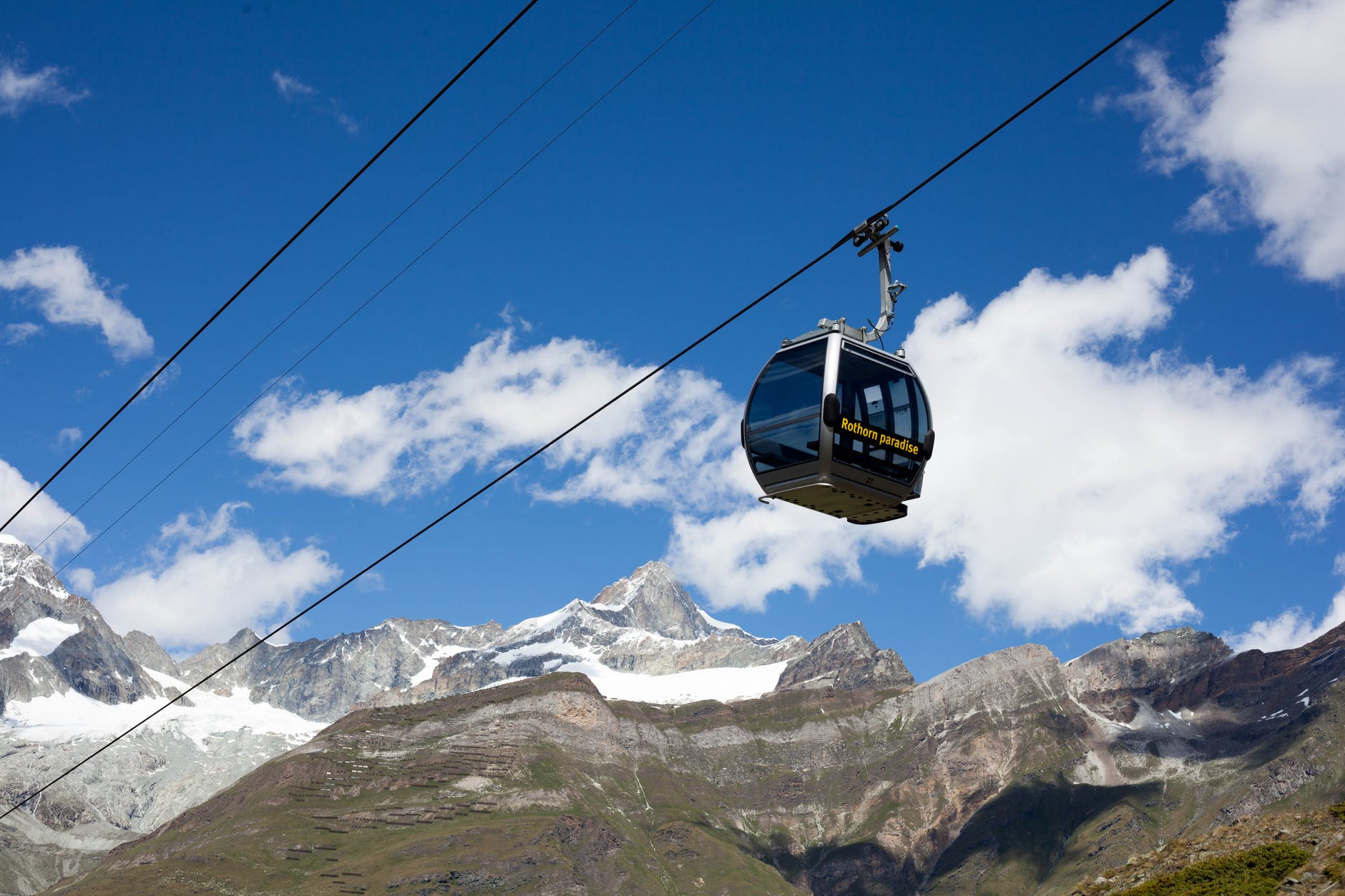
Photo by Scott McIntosh on Pexels.com
Friday, June 5, 2020
There’s something about gondolas that just sets people in stitches. Maybe it’s their association with the whimsy of Walt Disney World or other theme parks; maybe it’s that they are relatively rare in urban centers, most commonly associated with skiing in Colorado.
Councilman Bob Yates knows. He has tried to persuade Boulderites to think of cable transit not as an aberration but as an alternative mode of transportation.
“People chuckle when they hear the word gondola,” Yates said. “I don’t think people in America take them seriously.”
A recently released report makes the case that aerial travel is not only possible but could come with serious benefits, such as the ability to move thousands of people in mere minutes — without tying up traffic.
The Boulder Cable Transit Report focuses specifically on a long-sought connector between University Hill and downtown, one-third of a mile and 70 vertical feet away, that Yates and others have advocated for off-and-on over the years.
Such a system is technically feasible, but comes with a multi-million dollar price tag: between $21 million and $41 million to construct a half-mile of cable transit with two stations. It would take five minutes to transverse a path from the planned University of Colorado conference center to a TBD location on Pearl Street.
“It is important to note the following should not be construed as a cost estimate and provides a high-level order of magnitude costs based on a sum of the rough element costs,” study authors noted. “It makes no allowance for project soft costs, land acquisition or other project costs which could be significant.”
To drill down into more realistic costs would require a financial feasibility study as a next step, something Yates knows is incredibly unlikely given the COVID-19 crisis currently wreaking havoc on city budgets.
“This is the worst possible time to be having this conversation,” Yates said. “We and the university are simply not in the situation where we can go out and raise a bunch of capital and take risk” — or even spend money on a study.
“I think community members would be understandably concerned if we are looking at the feasibility of a system we are probably not in a position to implement any time soon.”
Boulder didn’t shell out anything for this report. It was paid for by a grant, provided by 100 Resilient Cities, a now-defunct Rockefeller Foundation project to help cities plan for climate change. Doppelmayr Seilbahnen GmbH, a company that builds cable car systems, partnered on the study.
Authors also looked at other appropriate places for a gondola. CU’s various campuses would be well-served by aerial connection, it found, as could the 28th and 30th Street corridors. Cost estimates were only provided for the Broadway line, running from Grandview to Euclid and extending into campus near Fiske Planetarium: 0.83 miles, three stations and an 8-minute travel time for $32.5-$52.5 million.
It was a university official who first planted the gondola seed in Yates’ brain, he said. The motivation is clear: “They have to move thousands of students all day, every day from Point A to Point B.”
Cable cars are cheaper upfront than rail — roughly 10% to 33% of the cost, according to the report — but more expensive than buses. A new electric bus cost $750,000 in 2018, according to city officials looking to convert Boulder’s HOP fleet. But gondolas make up the money in operational and per-rider costs, moving thousands with a handful of operators rather than dozens per bus driver.
There are significant downsides, enumerated in the study, including concerns over privacy, impacts to the view shed and solar rights, and the potential loss of trees — all big deals in Boulder. There’s also the city’s 55-foot height limit to contend with, as well as its weather. High winds and lightning may result in “periods of low service availability,” authors wrote.
One unanswered question is public appetite for flying among the streets. The gondola has been bandied about for years, but discussion tends to elicit groans rather than gusto.
While Yates points to Portland’s successful Aerial Tram and Roosevelt Island’s long-standing Tramway as serious commuter-movers — not to mention the dozens of gondolas scattered throughout hilly Latin American cities — critics contend
that cable cars in Boulder would largely be a tourist trap for our estimated 8.5 million annual visitors.
It’s a debate that won’t be settled anytime soon. Without the funds for further study, the technical feasibility report will be stuck on a shelf. It was released as part of last week’s council packet but received no mention at the meeting.
Thankfully, Yates said, the findings won’t go stale. Maybe by the time Boulder is ready to dust it off, people will have come around to the idea of soaring above the streets rather than sitting in traffic at ground level.
“As congestion and pollution continues to be a problem,” Yates said, “I think people are going to start taking these seriously.
“When that happens, maybe people won’t giggle anymore.”
— Shay Castle, boulderbeatnews@gmail.com, @shayshinecastle
Want more stories like this, delivered straight to your inbox? Click here
to sign up for a weekly newsletter from Boulder Beat.
Transportation Aerial Tram Bob Yates Boulder Boulder Cable Transit Report cable cars city of Boulder Fiske Planetarium gondola public transit Rockefeller Foundation Roosevelt Island transportation University Hill University of Colorado Walt Disney World
